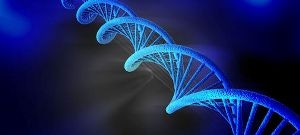Sep 26 2017
A research team at the University of York has discovered that genes are regulated by unique structures called ‘nano footballs’. Although these structures have similar appearance like footballs, they are 10 million times smaller than the average ball.
 Credit: University of York
Credit: University of York
Transcription factors are special chemicals that are found inside the cells and play a role in gene regulation such as controlling whether a gene is switched ‘off’ or ‘on’. Researchers placed tiny glowing probes on these transcription factors and gained a much better understanding of how genes are regulated.
Most importantly, the team found that transcription factors operate as a spherical football-like cluster of around 7 to 10 molecules measuring about 30 nanometers in diameter, and not as single molecules as was previously believed.
This latest discovery of nano footballs will aid Scientists to gain a better understanding of the fundamental ways in which genes function, and may also provide key insights on human health problems associated with cancer and other various genetic disorders.
A team of Scientists from the University of York, and Chalmers University of Technology and the University of Gothenburg, Sweden carried out the research, which was published in eLife. The study was supported by the Biotechnology and Biological Sciences Research Council (BBSRC).
Using the same type of yeast cells employed in baking and brewing beer, the Scientists leveraged sophisticated super-resolution microscopy to observe the nano footballs in real time.
Our ability to see inside living cells, one molecule at a time, is simply breathtaking. We had no idea that we would discover that transcription factors operated in this clustered way. The textbooks all suggested that single molecules were used to switch genes on and off, not these crazy nano footballs that we observed.
Professor Mark Leake, Chair of Biological Physics, the University of York
Nano hopping
According to the team, the cell adopts an ingenious strategy to enable transcription factors to reach their genes of interest as rapidly as possible, which ultimately results in the clustering process.
We found out that the size of these nano footballs is a remarkably close match to the gaps between DNA when it is scrunched up inside a cell. As the DNA inside a nucleus is really squeezed in, you get little gaps between separate strands of DNA which are like the mesh in a fishing net. The size of this mesh is really close to the size of the nano footballs we see.
Professor Mark Leake, Chair of Biological Physics, the University of York
Professor Leake added, “This means that nano footballs can roll along segments of DNA but then hop to another nearby segment. This allows the nano football to find the specific gene it controls much more quickly than if no nano hopping was possible. In other words, cells can respond as quickly as possible to signals from the outside, which is an enormous advantage in the fight for survival.”
Genes are made from the so-called molecule of life called DNA. In the 1950s, pioneering Biophysics Researchers discovered that this molecule has a double helix shape and since then, much has been learned about these transcription factors which can regulate whether a gene is switched off and on.
When a gene is switched on, the cell’s specialized molecular machinery reads off its genetic code and transforms it into a single protein molecule. Following which, countless number of different types of protein molecules can be made and the interaction of these molecules can fuel the building of all of the unique structures present within the living cells.
Genetic disorders
One aspect that is fundamental to all life is the process of regulating which genes are switched off or on at any specific point in time. If this process goes wrong, it can cause serious health issues. Dysfunctional switching of genes, in particular, can cause the cells to grow and divide in an uncontrolled manner, which would eventually lead to cancer.
The latest study may give a better understanding of human health problems associated with various genetic disorders. Going forward, the next stages will be to apply this study to more complex types of cells than yeast - and then eventually into human cells.